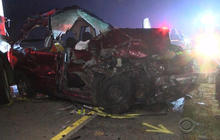This article from CBS news explains the major issue all insurance companies are now facing with the lower gas prices.
The lowest gas prices in years could wind up helping to drive up car insurance payments for U.S. motorists. As Americans put more miles on their cars last year, motor vehicle deaths rose 8 percent, and as a result, car insurance premiums are likely to rise in 2016.
The National Safety Council (NSC) estimates that 38,300 people were killed on U.S. roads in 2015, and 4.4 million were seriously injured. “2015 likely was the deadliest driving year since 2008,” said the NSC, a nonprofit, nongovernmental organization that promotes health and safety in the U.S.
Inquiries to auto insurers about rising premiums either weren’t immediately returned or were referred to the Insurance Information Institute (III), which represents the industry.
“The short answer is that people are driving more miles, accidents are becoming more frequent and the average claim continues to grow,” said III chief actuary James Lynch. “That creates more upward pressure on rates.”

What car insurance companies don’t tell you about rates
GEICO, the second-largest U.S. car insurer and a unit of Berkshire Hathaway (BRK.A), is among the insurers that has already noticed a decline in underwriting profits and said in federal filings it’s “implementing rate increases as needed.” Allstate (ALL), the third-largest, is also raising rates because of more accidents, the Insurance Journal has reported.
Lynch attributed the increase in driving to the improving economy and sharply lower gas prices, which have plunged nearly a dollar a gallon in the last year, according to the American Automobile Association (AAA). Less expensive driving may also have put more young drivers, who have limited budgets, on the highways, said Lynch. They generally have more accidents than older motorists.
Americans drove 1.26 trillion miles in the first five months of last year, even before vacation season, according to the U.S. Department of Transportation. That was up from the old record of 1.23 trillion set in 2007, just prior to the last recession.
A big unanswered question is why traffic deaths have been increasing at a faster rate than driving miles. “At this point we really don’t know,” said spokesperson Michael Green of the AAA.

Vehicle-to-vehicle tech aims to prevent accidents
One theory is that drivers are using handheld devices more and more to call and text, even as more states pass laws against it. The NSC estimated in a 2015 report that a quarter of all crashes involved cell phone use. Another theory blames raised highway speed limits in many states.
An additional puzzlement is which states have seen either an upward — or downward trend — in auto fatality rates. The NSC estimates Oregon (27 percent), Georgia (22 percent), Florida (18 percent) and South Carolina (16 percent) all experienced increases in fatalities, while 13 states showed the reverse. Among them were New Mexico (-20 percent), Kansas (-7 percent) and New Jersey (-2 percent).
“The state issue is even more difficult to understand,” said the AAA’s Green.
The so-called “Lucky 13” are fortunate in more ways than one.
Since insurers operate on a state-by-state basis, auto insurance rates in these 13 states may go down — while a good portion of the nation goes up.


